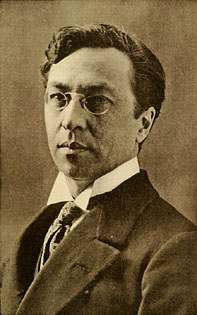Voir l'invisible, Michel Henry, 1988
Vassily Kandinsky citations célèbres
Voir l'invisible, , 1988
Cette base sera définie comme le principe de la nécessité intérieure.
Du spirituel dans l’art, 1911
Voir l'invisible, , 1988
Point et ligne sur plan, 1926
Du spirituel dans l’art, 1911
Citations de l'âme de Vassily Kandinsky
Du spirituel dans l’art, 1911
Du spirituel dans l’art, 1911
Regards sur le passé, 1912-1922
Vassily Kandinsky: Citations en anglais
Quote in his letter to Gabriele Münter, September 4, 1916; as cited in Hans K. Rothel and Jean K. Benjamin, Kandinsky: Catalogue Raisonné of the Oil Paintings, Volume Two, 1916–1944; Cornell University Press, Ithaca, N.Y, 1984, p. 580
1916 -1920
Quote of Wassily Kandinsky, 1919 - his self-characterisation in 'Das Kunstblatt', 1919; as cited in 'Klee & Kandinsky', 2015 exhibition text, Lenbachhaus und Kunstbau Munich, 2015-2016 https://www.zpk.org/en/exhibitions/review_0/2015/klee-kandinsky-969.html
1916 -1920
Source: 1916 -1920, Autobiography', 1918, p. 29
Quote in his letter to Herwarth Walden [of 'der Sturm'], August 2, 1914; as cited by lrike Becks-Malorny, in Wassily Kandinsky, 1866–1944: The Journey to Abstraction [Cologne: Taschen, 1999], p. 115
because of the outbreak of World War 1. Kandinsky had to leave Germany because of his Russian nationality
1910 - 1915
Quote from: 'Looks on the past', Wassily Kandinsky; published in der Sturm, Berlin 1913
1910 - 1915
Part II. About painting : VI. The language of Form and Colour : Footnote
Similar quote in another translation:
There is no form, there is nothing in the world which says nothing. Often - it is true - the message does not reach our soul, either because it has no meaning in and for itself, or - as is more likely – because it has not been conveyed to the right place.. .Every serious work rings inwardly, like the calm and dignified words: 'Here I am!'
Partly cited in: Raymond Firth (2011) Symbols: Public and Private, p. 43
1910 - 1915, Concerning the Spiritual in Art, 1911
Quote of Kandinsky, c 1903; as cited by de:Wolf-Dieter Dube, in Expressionism; Praeger Publishers, New York, 1973, p. 114
1910 - 1915
The geometric point has, therefore, been given its material form, in the first instance, in writing. It belongs to language and signifies silence.
1920 - 1930, Point and line to plane, 1926
